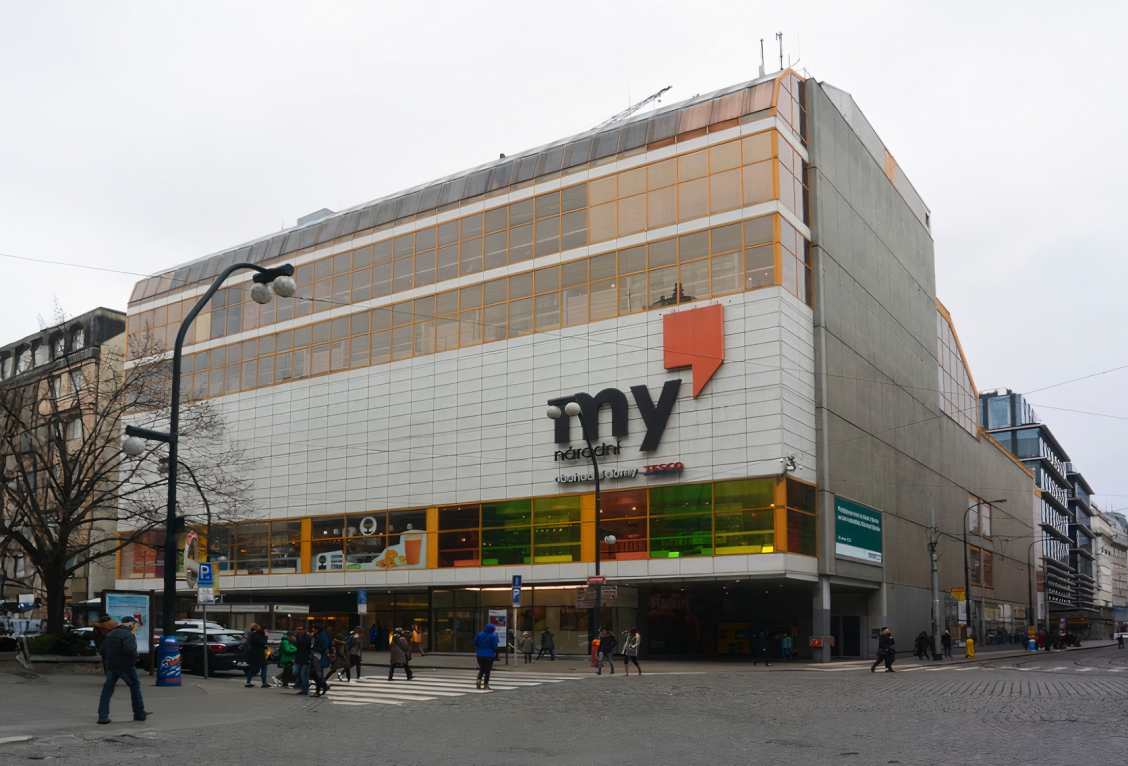From the international conference: is Czech high-tech architecture equal to its western half?
25/10/2023

The first event, which was attended by the lecturers of the Department of Theory and History of Architecture: art historian Klára Ullmannová and architectural historian Petr Vorlík, took place in September at the leading research and educational institution ETH Zurich. High-tech Heritage: (Im)permanence of Innovation. The high-tech direction in architecture was manifested above all by innovative facades and distinctive load-bearing structures. However, the rapid obsolescence of the technical innovations of the 1980s, compared to the "normal" building production of then and now, often results in complete replacements and rebuilds in lieu of a gentle restoration of the building in question. The aim of the conference was therefore to bring an updated view of conservation to this issue. Petr Vorlík in his paper High-tech in the context of Czech late socialism? traced three lines of technicist perception in Czech architectural work during the 20th century.
All three then sublimated during the 1980s due to the influence of Western high-tech architecture, when, according to him: "Despite the wide range of outcomes and forms, all of these attempts reflected the dreams of a young generation of architects for a bold, technicist, socially and environmentally responsible architecture. Before the collapse of the somewhat disorganized socialist regime, they offered a vision of a better future." With her contribution, Debating High-Tech Heritage Conservation in Czechia: The Case of the Máj Department Store, Klára Ullmannová opened the topic of the changing discourse of heritage conservation in Zurich. As she mentions, "Today, some of the "high-tech" buildings from this period have been given heritage protection, while others are falling into disrepair. In both cases, however, these buildings are often in need of restoration or reconstruction, which presents a number of challenges and issues from a conservation perspective." This includes questions not only about the preservation of heritage values, but also who has the authority to interpret them and what the dynamic is between conservation and the nation's memory.
The second international conference was held in Gdynia, Poland, under the title Modernism in Europe: Architecture of Public Service Buildings in Central and Eastern Europe of the 20th century. Professor Petr Vorlík was chosen to moderate a session of papers focusing on the impact of the centralization of the economy and construction in today's post-Soviet countries. In his own paper, Socialism for everybody? he sought, among other things, the difference between the approaches favoured by the socialist regime and those that merely reflected social and technological change across Europe. He presented the differences between standard productions for the general public and, on the contrary, socialist "luxury" for exposed public figures or produced to promote the regime itself.That is, in his words, "Differences that resulted from political priorities, available technologies, construction, processes in design institutes, and to a large extent the ambitions of the time or the extraordinary commitment of a few active people." The conference was sponsored by the Faculty of Architecture of Gdańsk University of Technology and Gdynia Maritime University.
The contributions, which are based on the long-term research projects of NAKI (80s and Stavoprojekt) at the Department of Theory and History of Architecture, were supported by the CTU Student Grant Competition and the FA CTU Mobility Fund.
Miroslav Pavel is responsible for public relations at the Department of Theory and History of Architecture.


